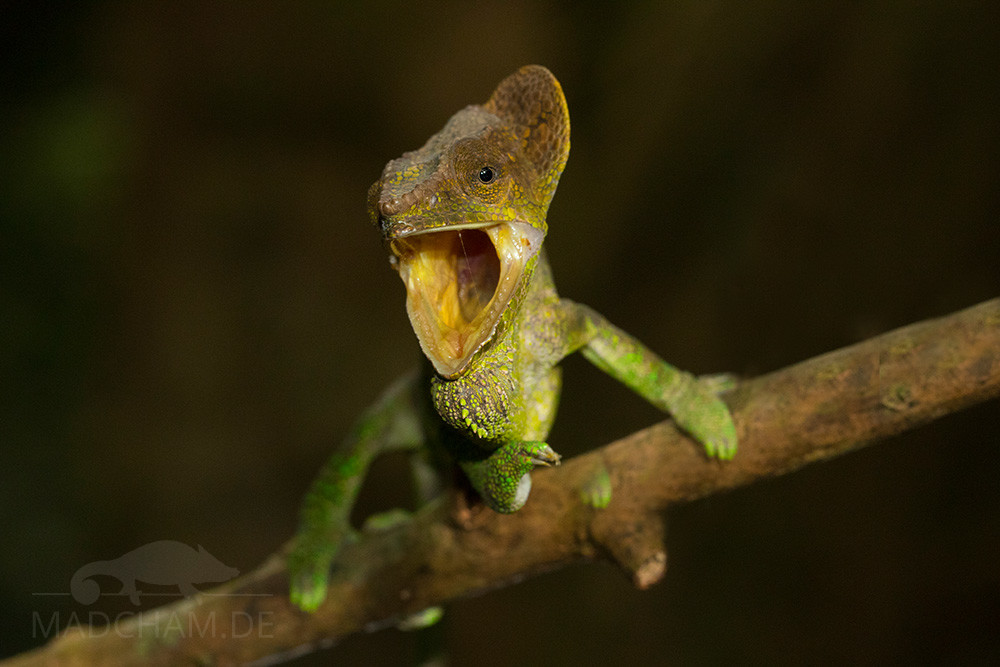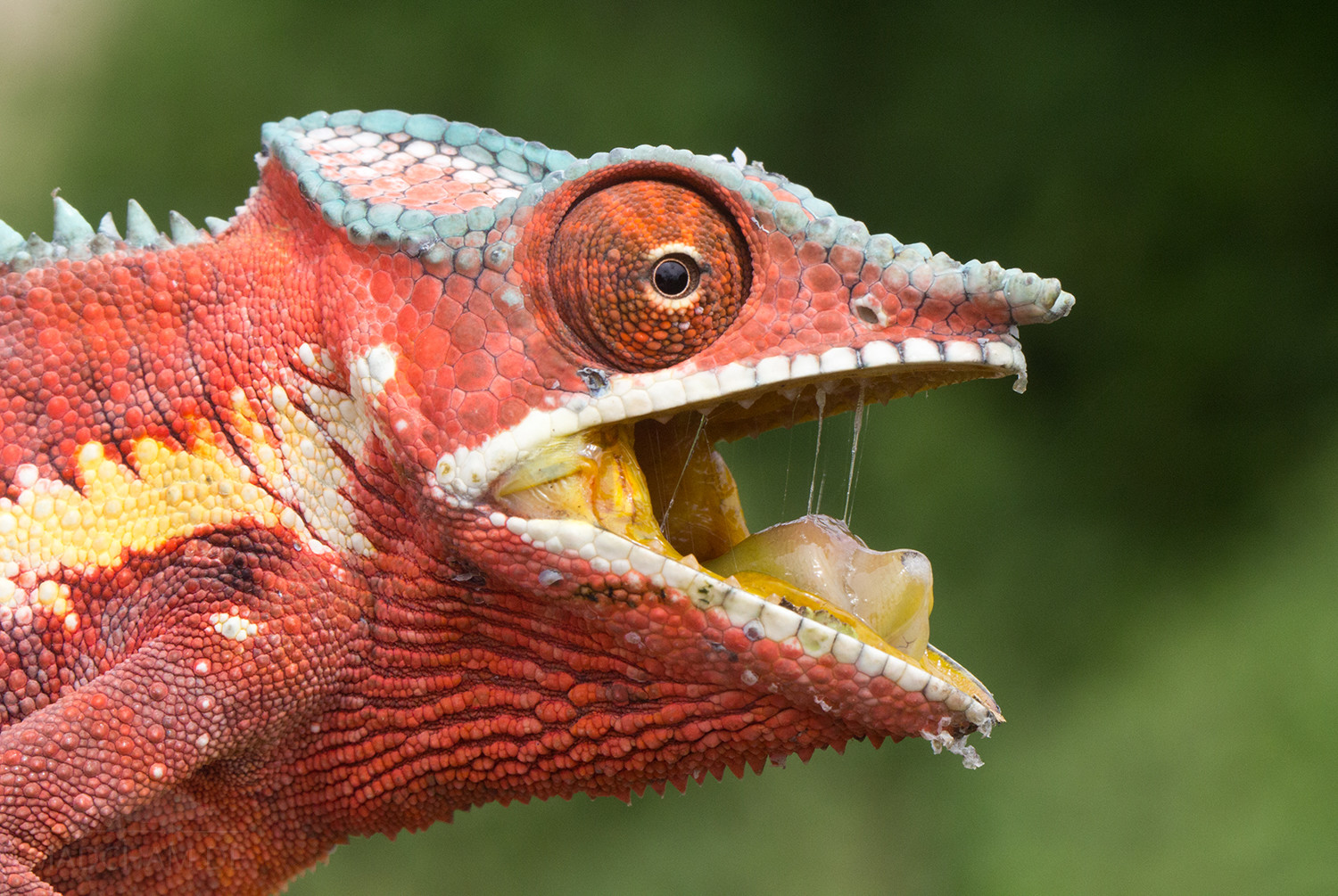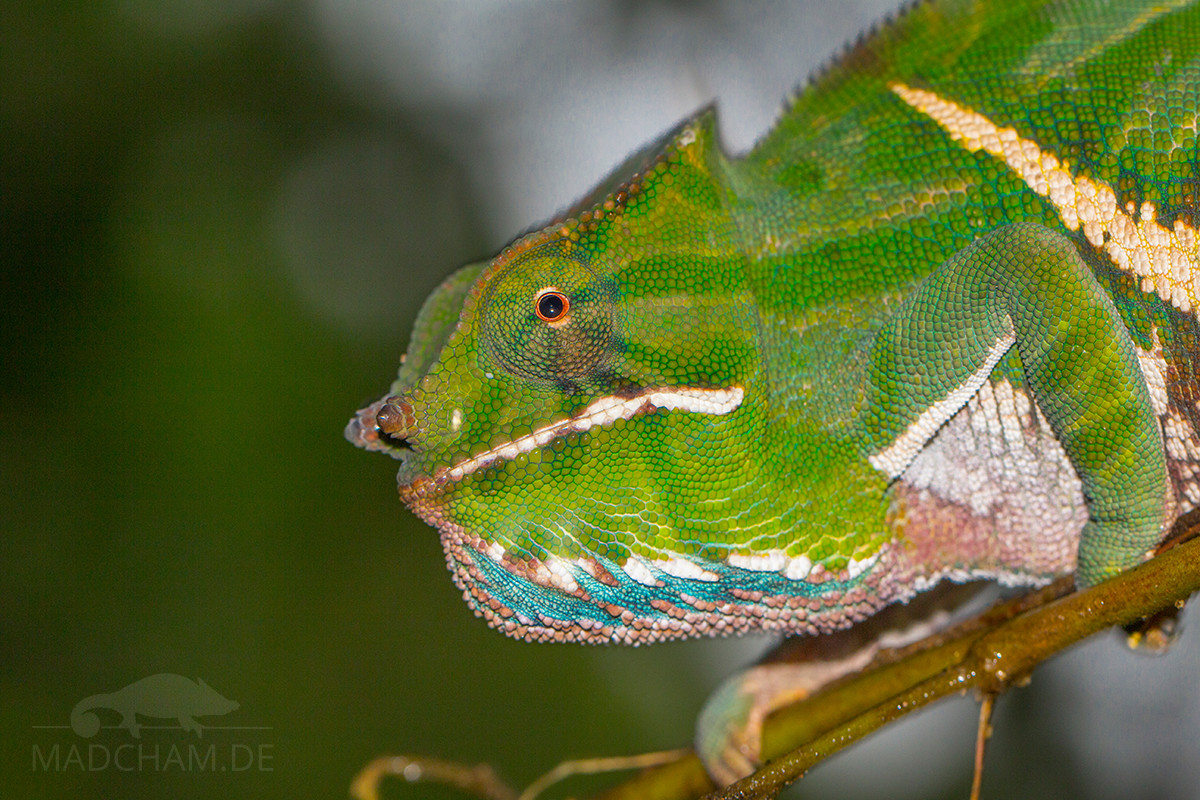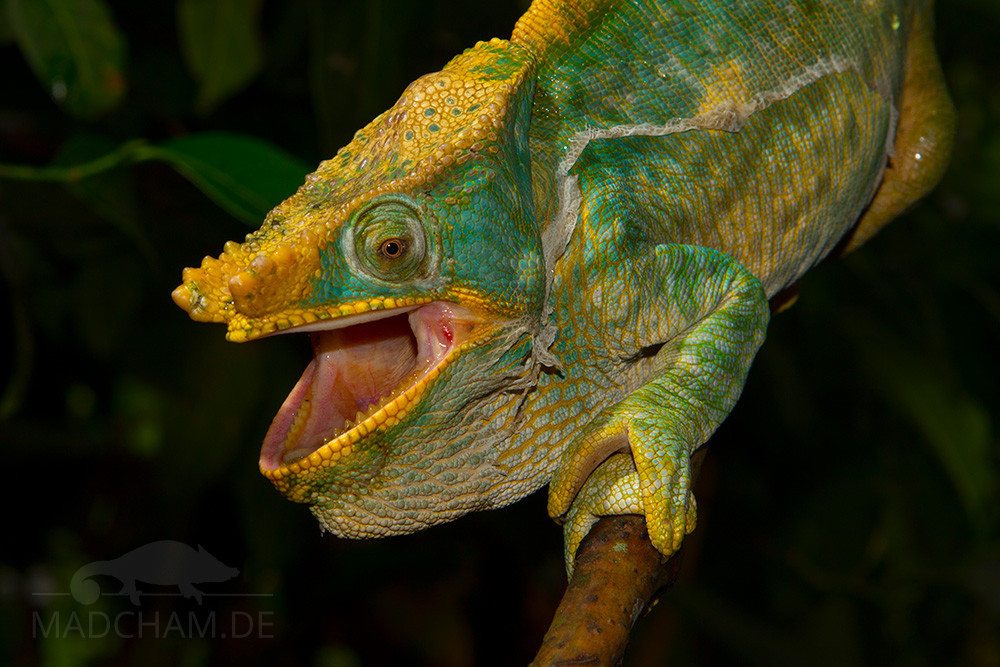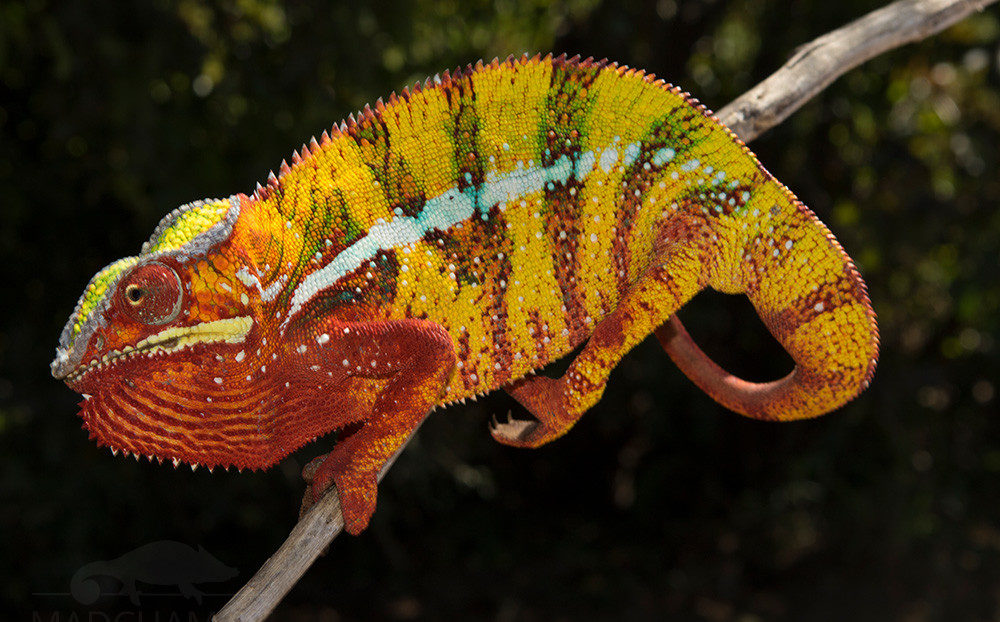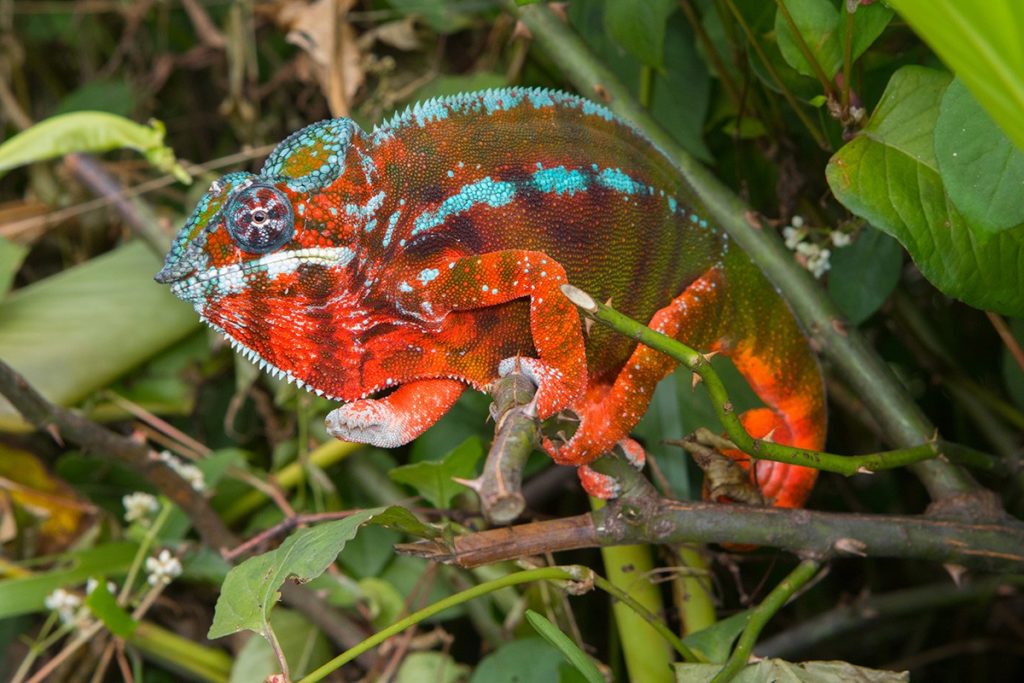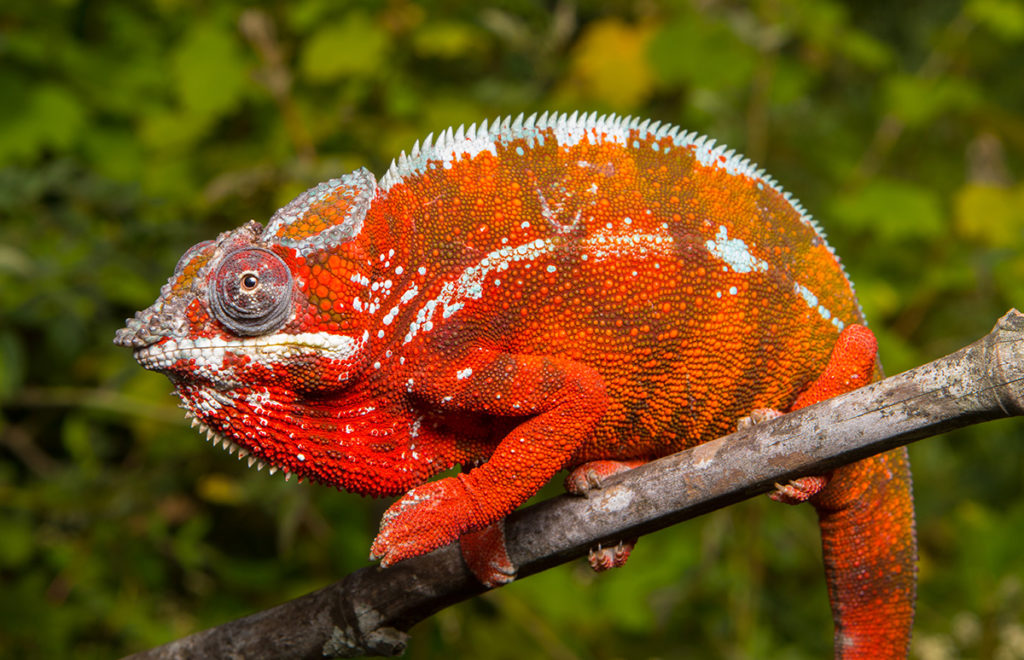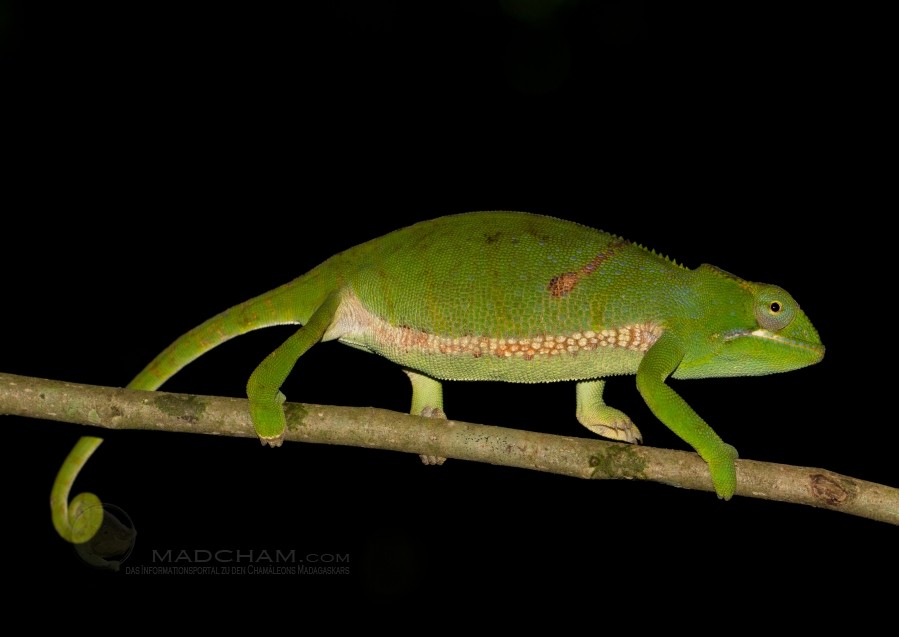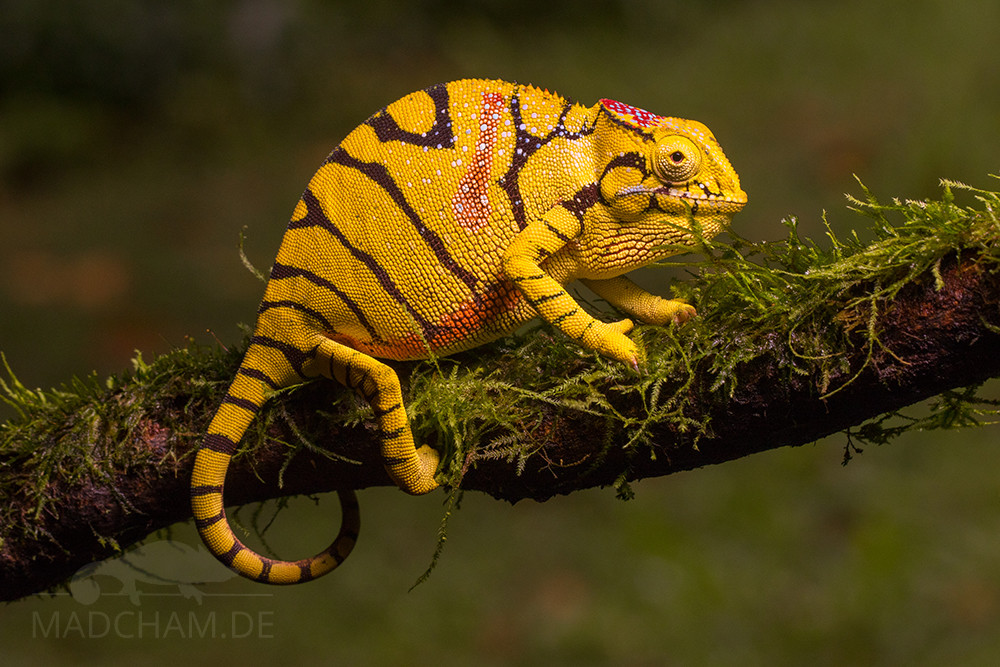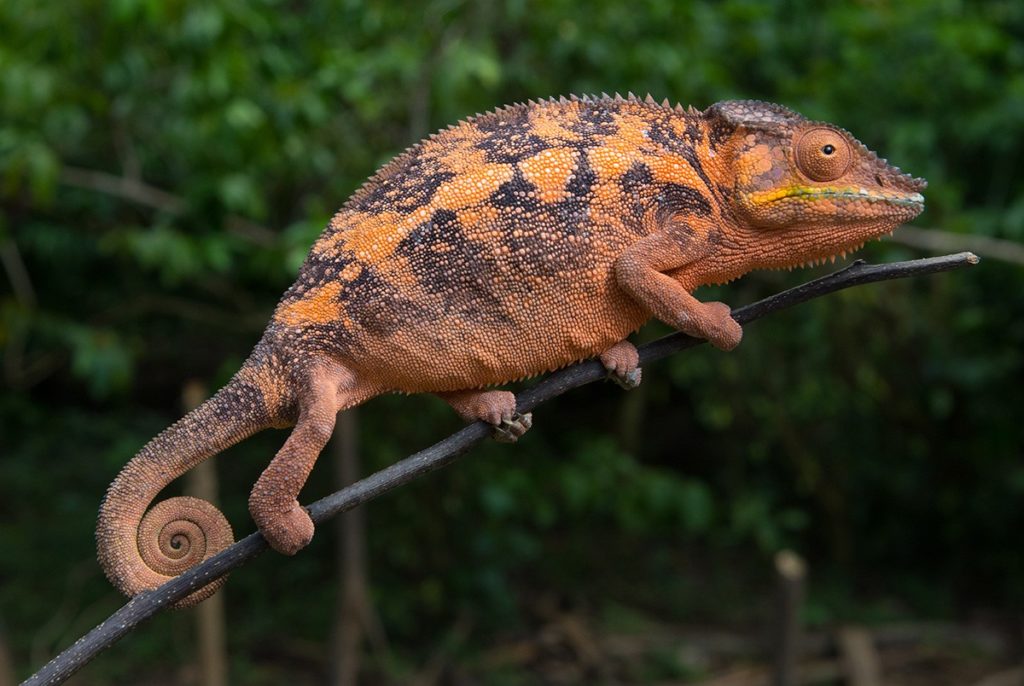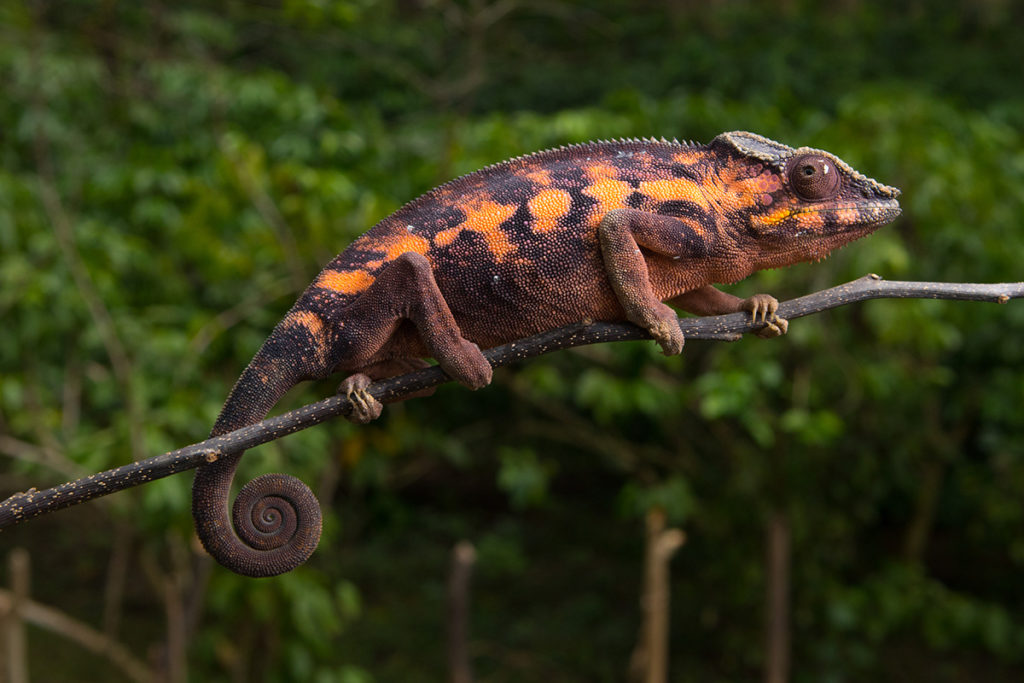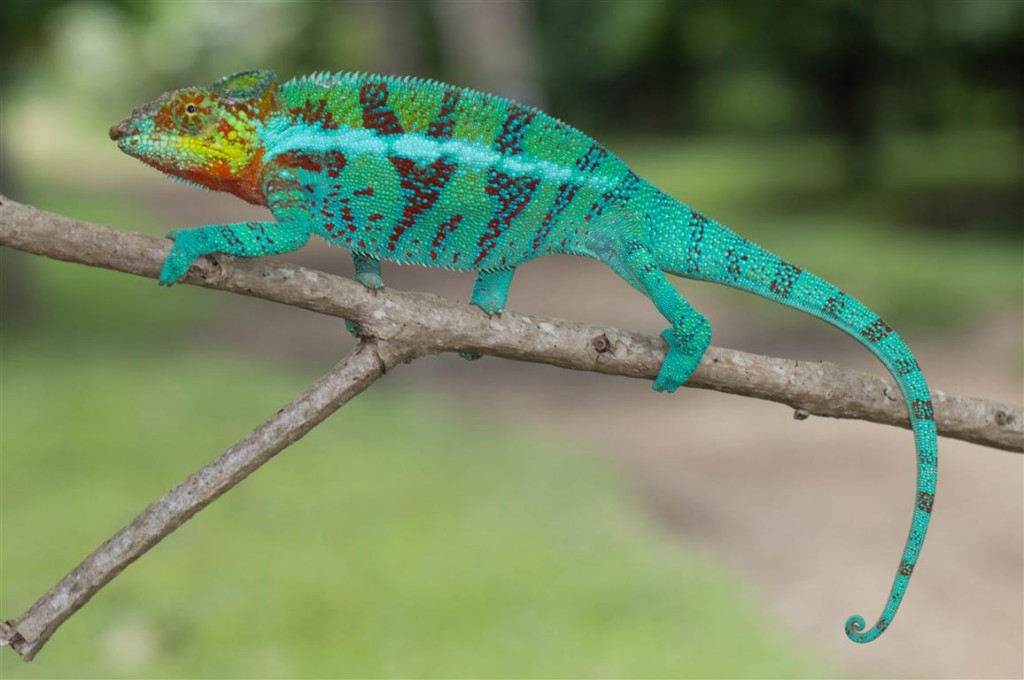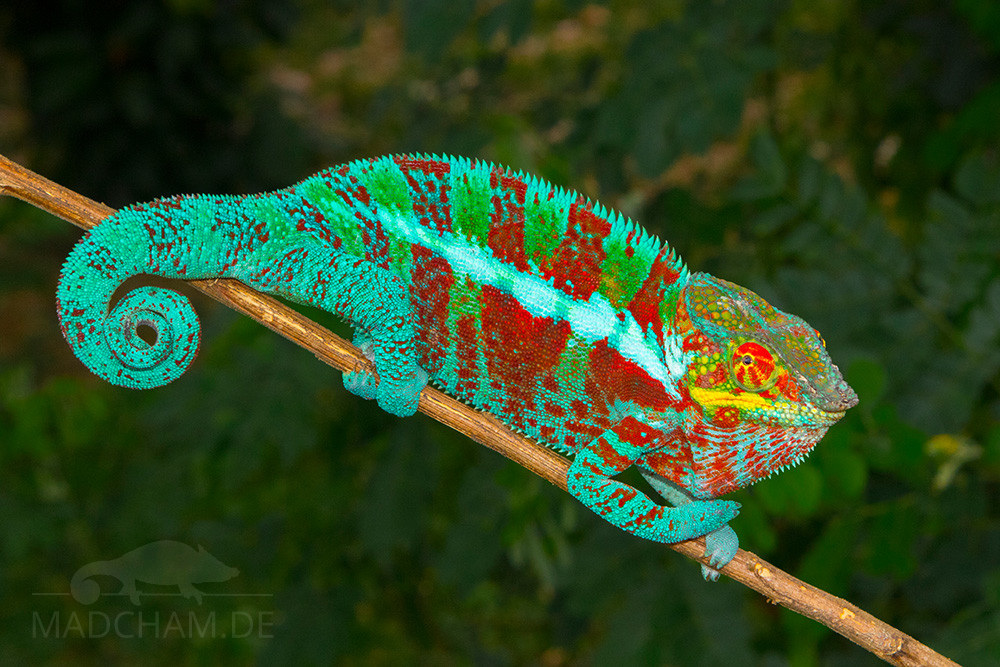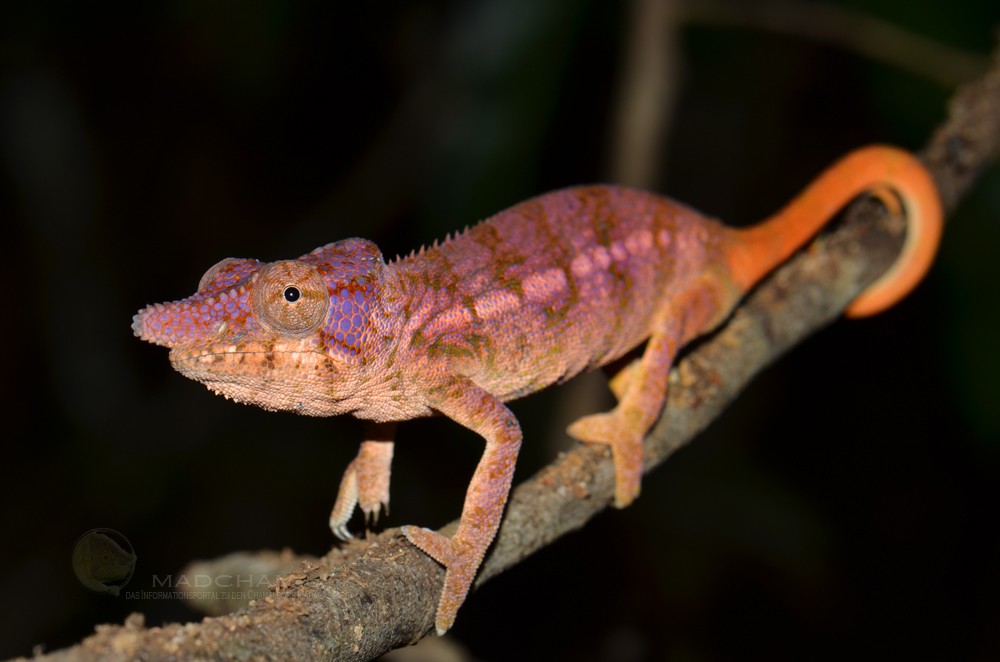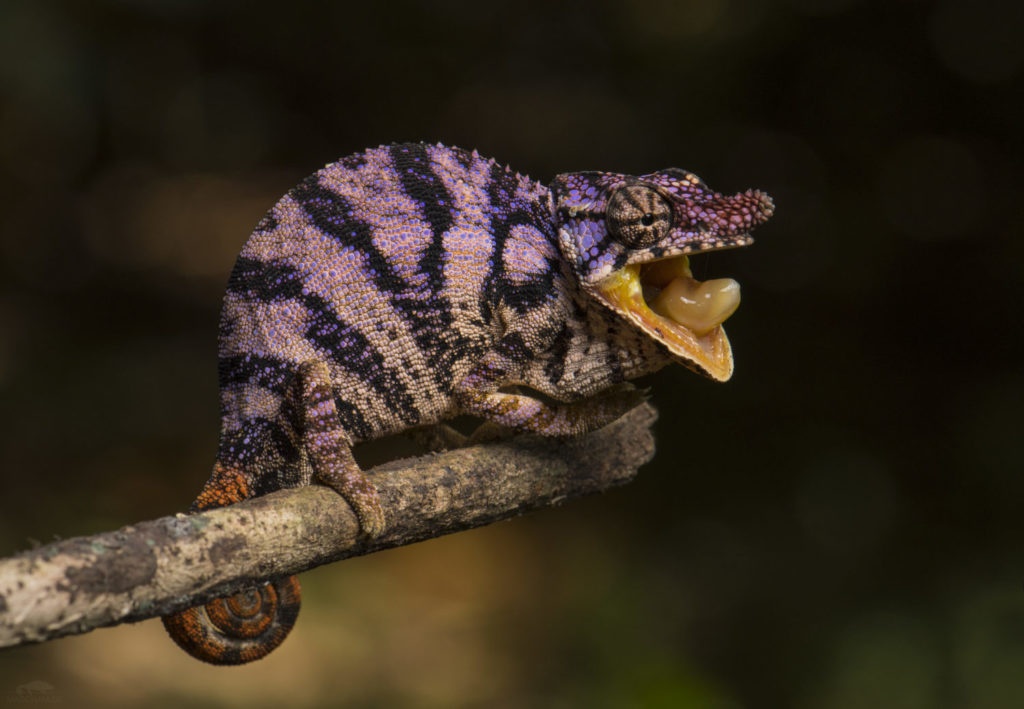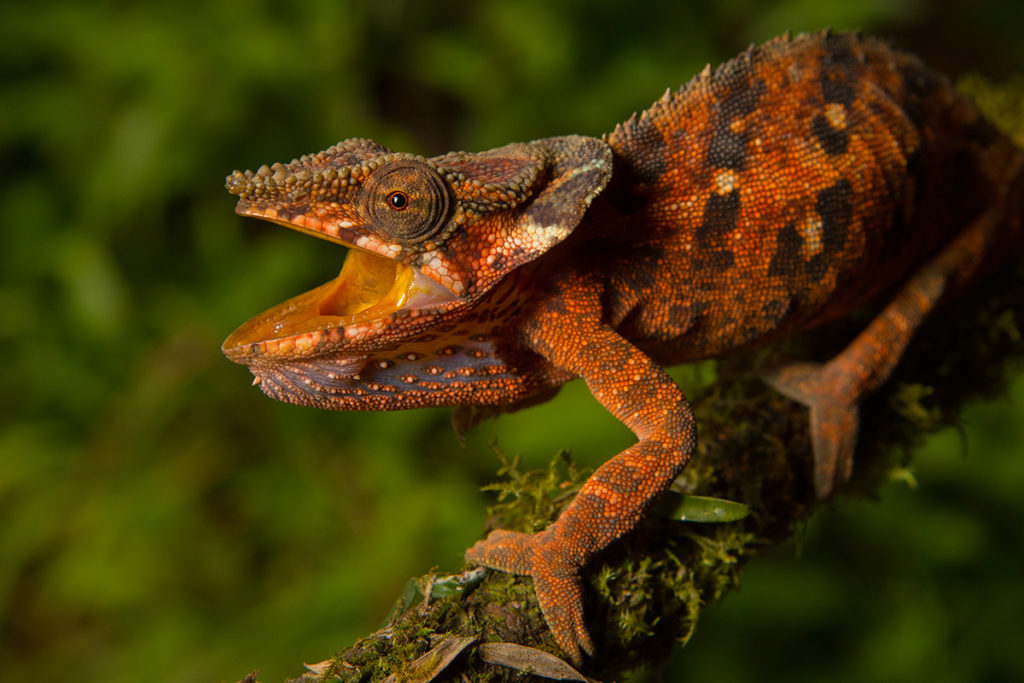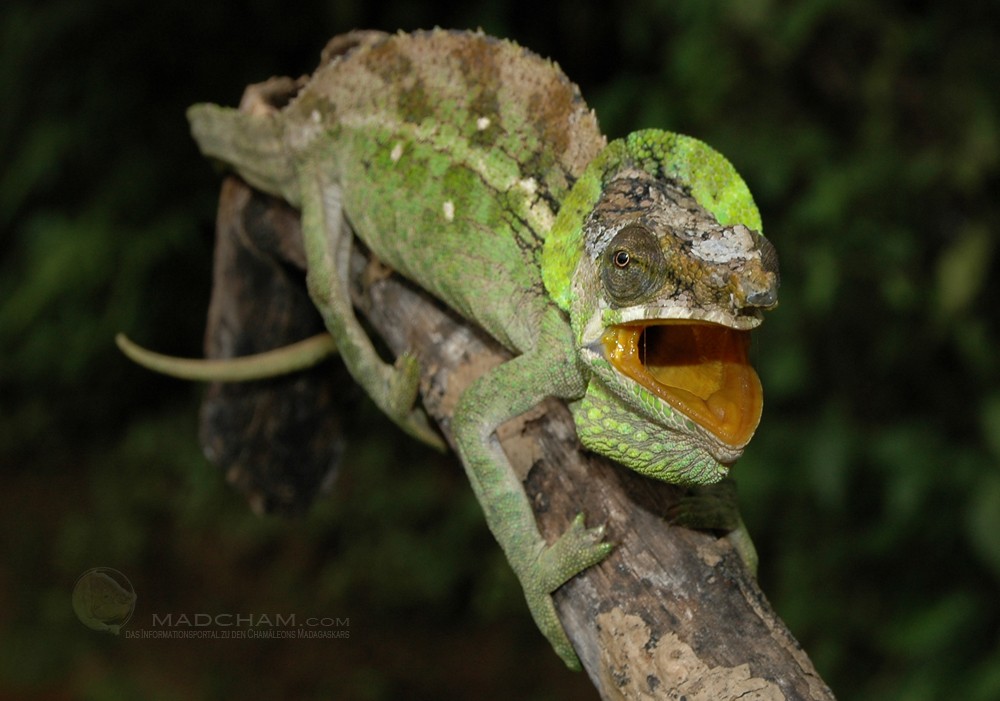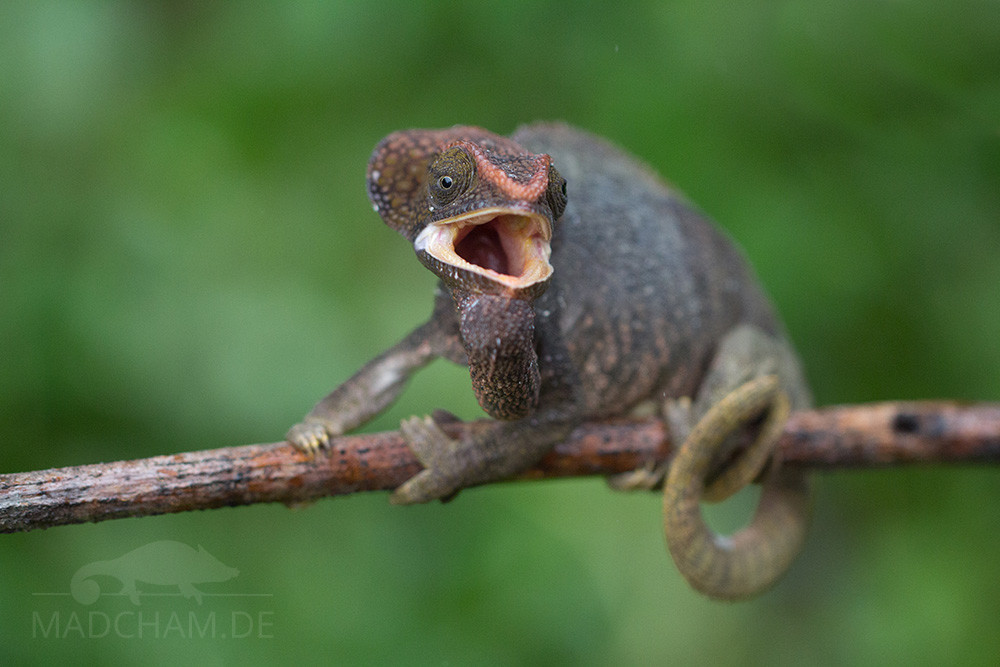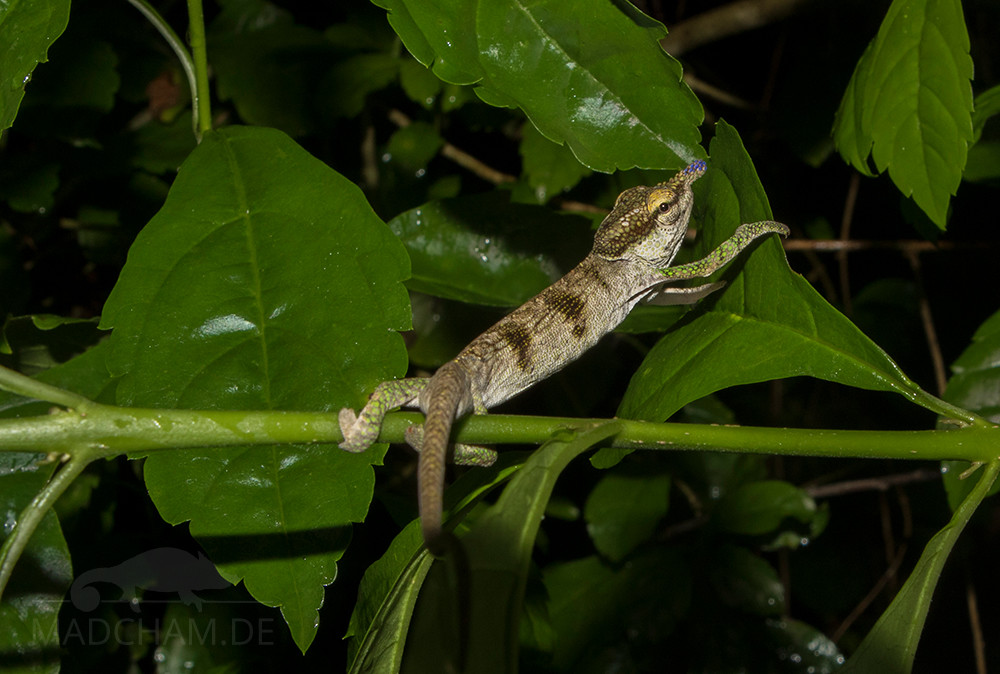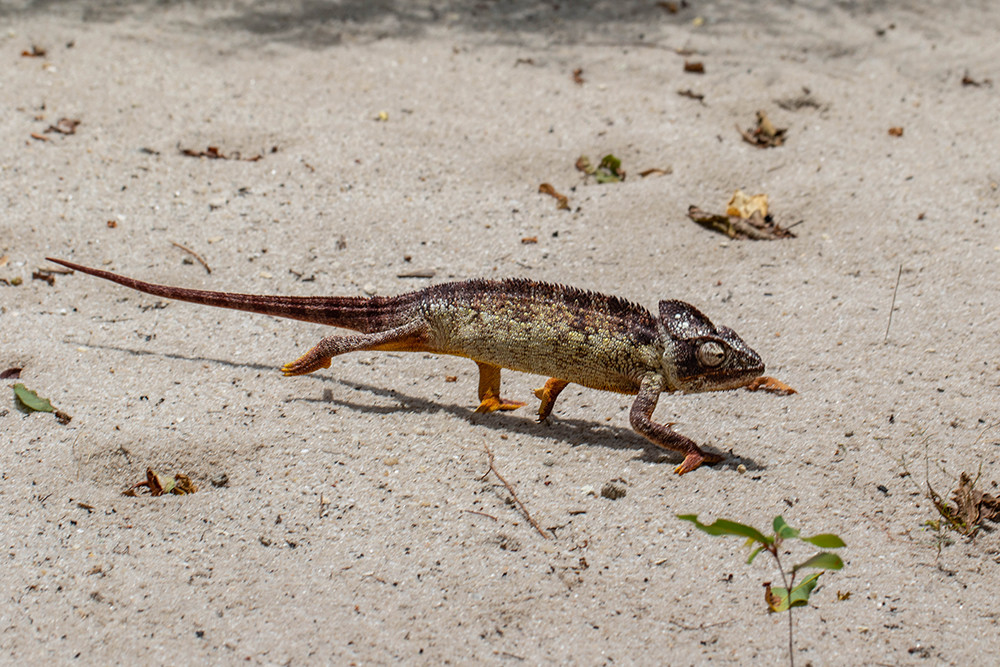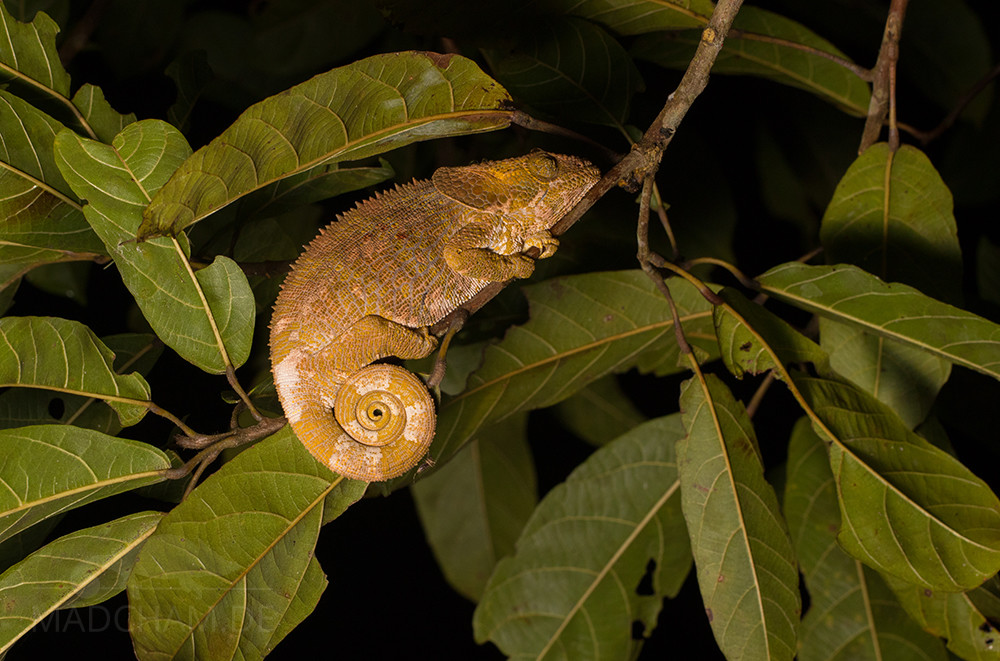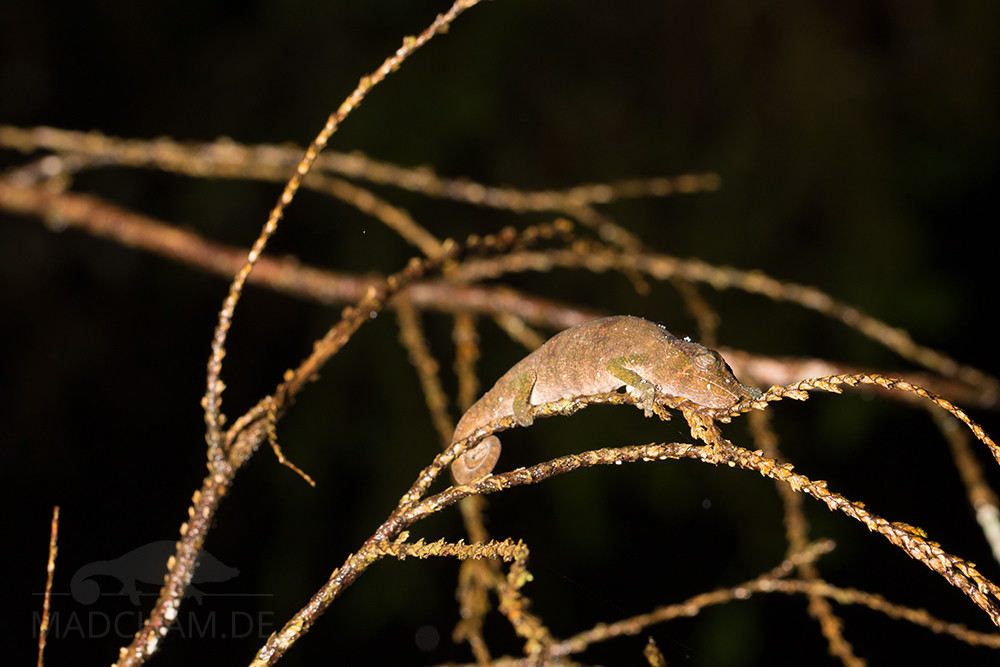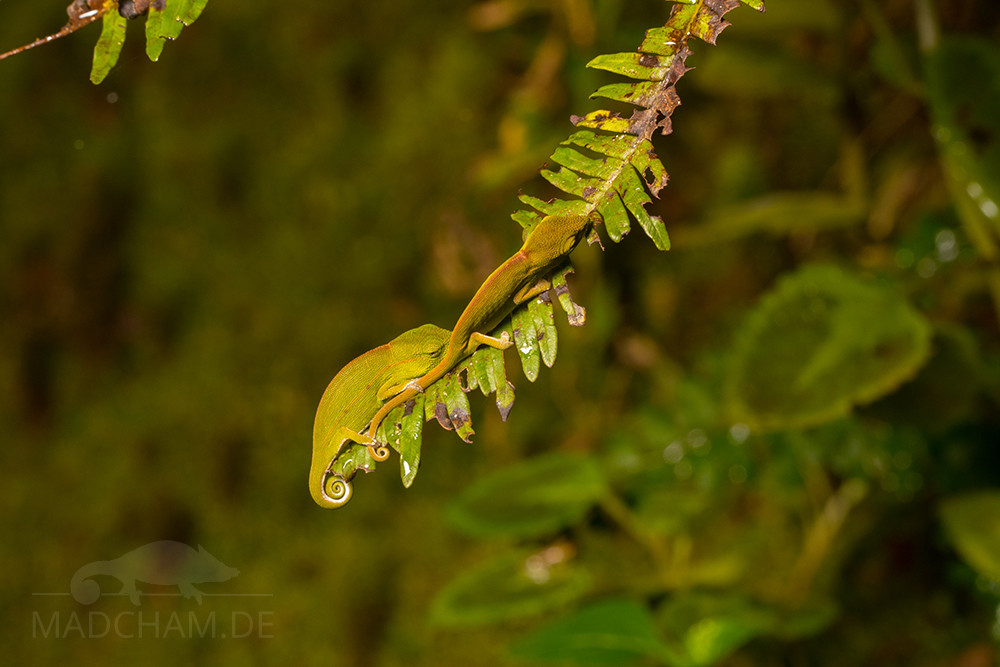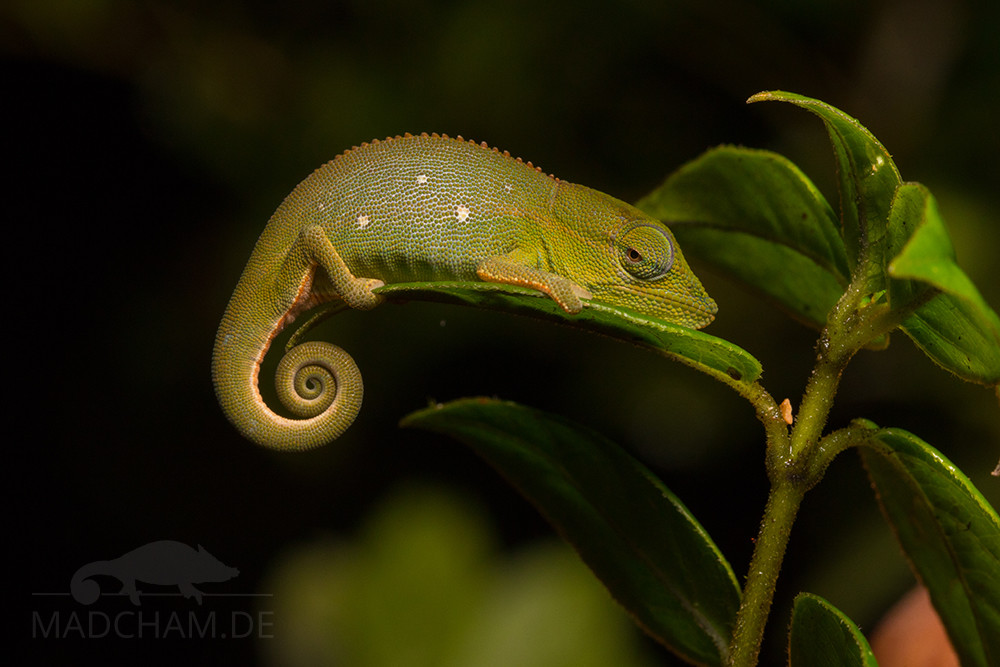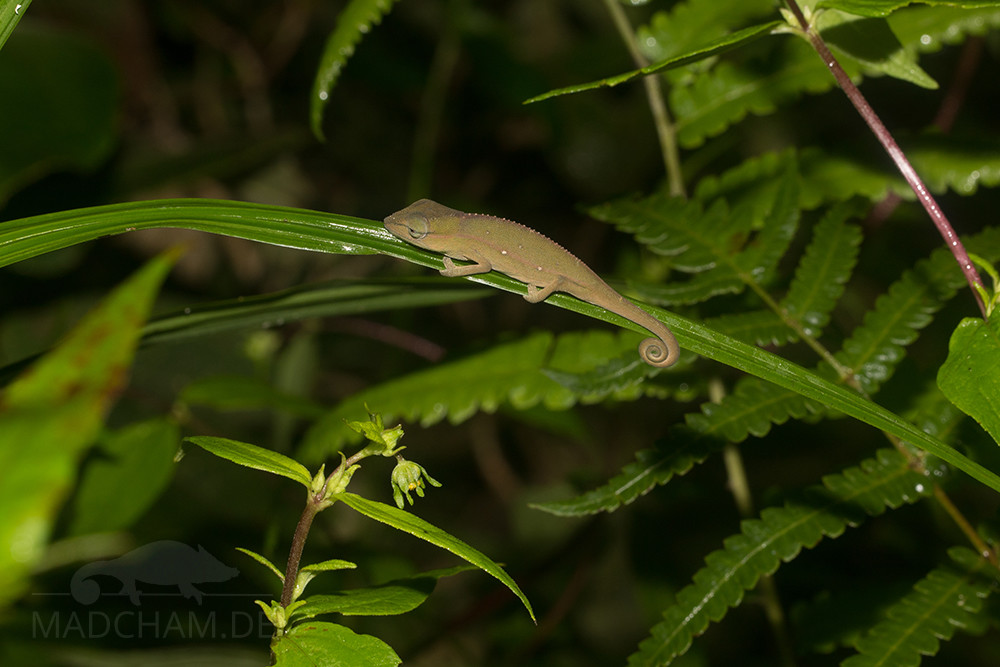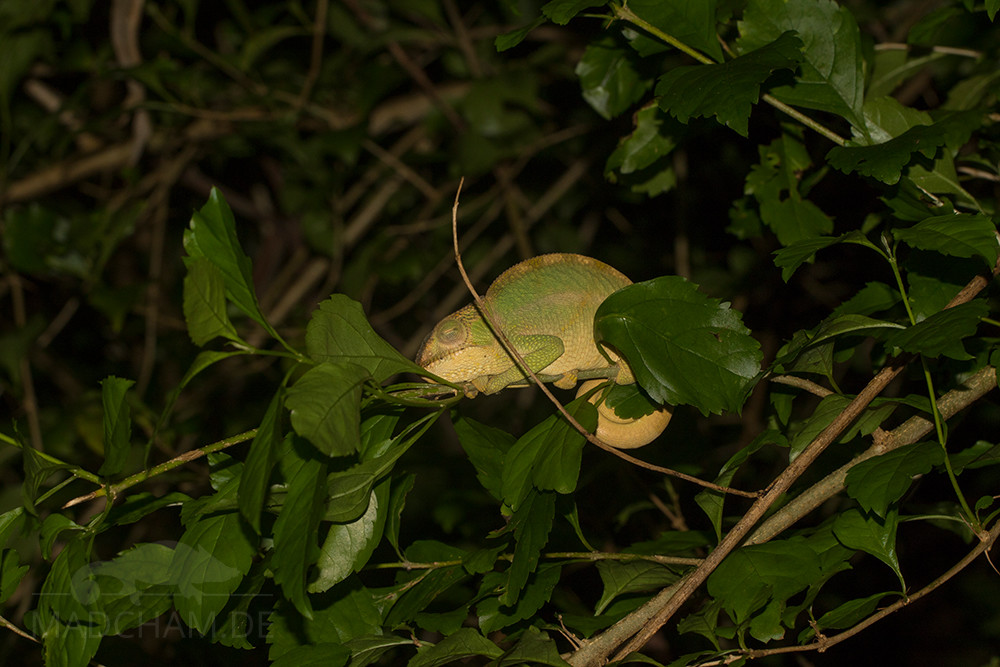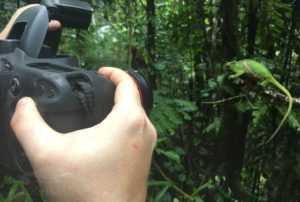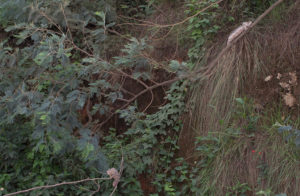Among the tree-dwelling chameleons on Madagascar are the genera Furcifer and Calumma. Among them are both the largest and the most colorful species. They have a whole range of threatening behavior which they can use to ward off prey predators or unwelcome conspecifics. This article is intended to explain both defense and escape behavior in more detail.
Inhaltsverzeichnis
Defensive behavior
Colour change
Chameleons of the genera Calumma and Furcifer communicate with conspecifics by means of their colours and the colour change. If they are stressed, they become darker. If a male sees a conspecific of the same sex, it becomes lighter. Also, pregnant females indicate with a completely changed coloration in many species that a male should not try to get them and stay away. Regarding predators, you can also notice differences in the colour of the chameleons’ reaction. Even between the sight of different species of predators, for example snakes and birds of prey, you can sometimes see differences in the colour reaction of a chameleon.
Enlargening the body size
The apparent increase in body surface area is a classic defensive behavior in tree-dwelling chameleons. A larger chameleon immediately has an impressive effect on the predator or the attacking conspecific. As the behavior takes place within a few seconds, it can at best frighten the attacker in such a way that it causes him to flee or abandon an attack. Chameleons have many different possibilities to increase the body’s surface. Most chameleons start by inflating their throat sac. This increases the skin surface of the throat, some chameleons can also use an additional air sac.
In addition to the bloated throat sac, most chameleons flatten their body sideways when threatening, so that it appears considerably larger at the top and bottom. For this purpose, the tail is rolled up and pulled against the body. If the chameleon was now viewed from above, it would suddenly be only extremely “thin” and flat. The broad side of the body is naturally turned towards the attacker in this deceptive manoeuvre. The chameleon keeps an eye on the other person and always turns with him to avoid the attacker accidentally discovering how “thin” and vulnerable the chameleon really is.
Spreading of the occipital lobes
Some chameleon species, for example, Calumma malthe, Calumma brevicorne, or Calumma cucullatum, have occipital lobes on their head. These lobes can be raised or spread forward. This makes the head of these animals appear considerably larger.
Bob and bite
If the enlarged silhouette and impressive coloration are of no use, the chameleon opens its mouth. Some species and individuals then make a hissing sound. If that doesn’t help either, it bends its arms “prayer-like” and swings its body back and forth. This seesawing then ends in single bites in the direction of the opponent. Chameleon bites are quite painful depending on the size of the chameleon. Because of the acrodontic teeth, however, they are usually more like a bruise than a “classic” bite injury, such as can be caused by cats.
Escape behaviour
Turn behind the branch
One behavior that all tree-dwelling chameleons exhibit, regardless of their size, is turning their body behind the branch they are sitting on. The potential threat then only sees the chameleon’s hands, feet, and possibly eyes. Body and tail “disappear” completely behind the branch. In small chameleon species such as One behavior that all tree-dwelling chameleons exhibit, regardless of their size, is turning their body behind the branch they are sitting on. The potential threat then only sees the chameleon’s hands, feet and possibly eyes. Body and tail “disappear” completely behind the branch. In small chameleon species such as Calumma gallus, this behavior can be triggered very quickly. But even with very large chameleons like Furcifer oustaleti we have already observed this behavior. If you turn the branch carefully, the chameleon will also turn. By the way, this often makes photographing chameleons difficult. After all, one does not want to photograph a “branch with eyes”. For chameleons, however, this behavior is vital for survival: they show it, for example, when a bird flies too close over them. On the other side of the branch, they are not noticed by the potential predator, or at least they are much less likely to be detected. In the following photo, a female Calumma gallus has hidden behind a branch.
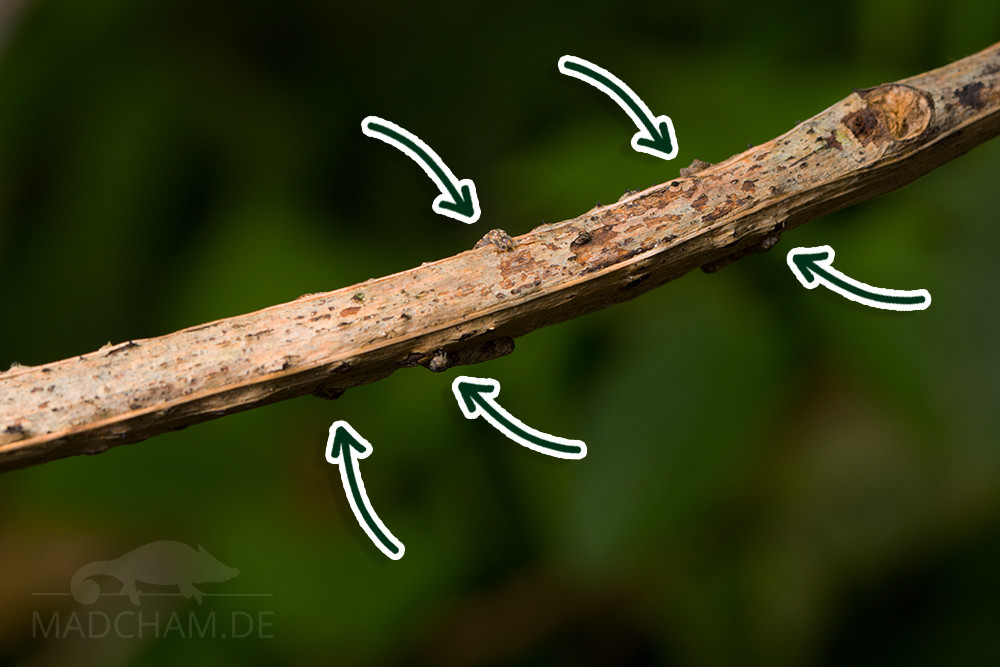
Escape
A simple strategy to avoid an unpleasant situation: Run away. Especially chameleons you meet by chance on the ground often try to run away first. And some, especially smaller species such as Furcifer wilsii or Furcifer timoni can become surprisingly fast! Most of the time they go directly from the ground to the next tree or at least to the next plant. There they can escape back to “familiar heights” and disappear from the view of a predator.
Jumping
Many chameleons simply jump off the branch when they see no other way out. This is especially the case when no tangible branch is close enough above or below the animal. The surrounding area is briefly probed, then the arms are lifted off the branch and bang! The animal is gone. Especially small chameleons like Furcifer willsii or Furcifer minor react quickly with such behavior. But also larger species like Furcifer pardalis use jumping to escape from unpleasant situations. It does not matter what is under the chameleon. They also jump on stones, rocks, or asphalt. Thanks to the air sacs in their body, usually nothing even happens.
Rolling
Very small tree-dwelling chameleon species have developed a behavior that partly resembles the defense behavior of ground chameleons. Calumma linotum, Calumma boettgeri and related, very small chameleon species curl up tightly when touched, turn dark and drop. Due to their lower body weight and the inflatable lung sacs, nothing happens to the chameleons. The chameleons usually fall into the leaves or into the root area of trees, where they then remain motionless for a short time and remain very dark in color. For most predators (and also for humans) it is almost impossible to find them in the tangle of leaves, branches, moss, and roots. This behavior is therefore very effective in fleeing from predators.
Perch release
Chameleons living in trees prefer to sleep on the ends of thin branches that just carry them. Young animals and small species even use the ends of individual leaves for sleeping. It is assumed that this behaviour serves to protect them from predators, especially snakes and larger lizards. Not all, but many chameleons spontaneously drop when the branch or leaf below them is shaken by a touch. This behavior is called perch release. The chameleons are not irritated by strong winds, but if a nocturnal lemur grabs the branch or a snake tries to wind its body over the branch, this vibration triggers the chameleon’s escape behavior.

